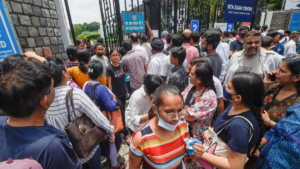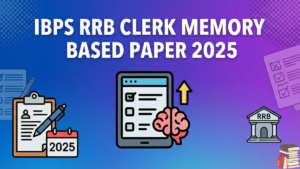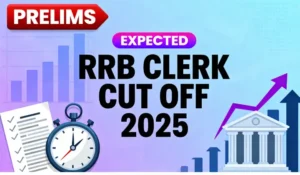Dear Readers,
The reasoning is a game of wits and presence of mind! Yes, it is true and it might seem as the greatest of the challenge after English Section’s surprises but yet this one can easily be dealt with. You just need correct practice and hardwire your brain to quickly make decisions of what to attempt and what to leave. And for same we are providing you questions of Reasoning Question and Answers. Solve these to Practice latest pattern reasoning question for bank exams.
Directions (1-5): Read the following information carefully and answer the questions that follow.
Ten persons are sitting in two parallel rows containing five persons each. In row 1, A, B, C, D and E are sitting and all of them are facing south. In row 2, P, Q, R, S and T are sitting and all of them are facing north. In the given seating arrangement, each member seated in a row faces another member of the other row. Moreover, each of them is speaking different language i.e. Chinese, Spanish, English, Arabic, Russian, Japanese, Hausa, Italian, French and Korean, but not necessarily in the same order.
Only two persons sit between the one who speaks Chinese who sits at an extreme end and E. P who sits in the middle of the row is not an immediate neighbour of Q who doesn’t speak Korean. T sits at an extreme end. E speaks Russian and also sits on the immediate right of the person who speaks Spanish . E faces the immediate neighhour of Q. B is not sitting at the extreme left end. P does not speak French. Only one person sits between C and D who speaks Chinese. S speaks Japanese. S is an immediate neighbour of the one who speaks Korean. S does not face the person who speaks English. R who speaks Arabic is an immediate neighbour of the person who speaks French. The person who speaks French faces the immediate neighbour of the one who speaks Russian. There are two persons between the one who speaks Hausa and the one who speaks English. B does not speak Hausa. T does not speak Italian. D does not sit at extreme right end.
Q1.A speaks which of the following language?
(a) Italian
(b) Hausa
(c) English
(d) None of these
(e) Can’t be determined
Q2.Who speaks Italian?
(a) R
(b) B
(c) T
(d) P
(e) Can’t be determined
Q3.‘Chinese’ is related to ‘ Korean’ in a certain way, based on their sitting arrangement. Then “Hausa” is related to which, following the same seating positions?
(a) Italian
(b) French
(c) Spanish
(d) Japanese
(e) Arabic
Q4.Four of the following five are alike in a certain way based on their seating positions and so form a group. Which of the following is different from the group?
(a) Russian
(b) Hausa
(c) Korean
(d) Arabic
(e) Japanese
Q5.Which of the following statements is/are definitely false?
(a) B speaks English.
(b) There are two persons sitting between the one who speaks Japanese and the one who speaks French.
(c) The person who speaks Spanish faces the person who speaks Italian.
(d) The person who speaks French sits opposite the person who speaks Chinese.
(e) All are true
Directions (6-10): Study the information and answer the following questions:
In a certain code language
“form panel forge consensus” is coded as “RL8 NK10 RD10 NR18 ”
“parties have decided their” is coded as “RR14 VD8 CC14 EQ10 ”
“has asked him stay ” is coded as”SR6 KC10 ML6 AX8″
Q6.What is the code for ‘candidate’ in the given code language?
(a) ND18
(b) MD18
(c) ND19
(d) NE18
(e)None of these
Q7.What is the code for ‘significant’ in the given code language?
(a) GS22
(b) GH22
(c) GS21
(d) HS22
(e)None of these
Q8.What may be the possible code for ‘especially’ in the given code language?
(a) QX20
(b) PX20
(c) PX21
(d) EX20
(e)None of these
Q9.What may be the possible code for ‘political’ in the given code language?
(a) KK18
(b) LK18
(c) LL18
(d) LK19
(e)None of these
Q10.What is the code for ‘factions’ in the given code language?
(a) DR16
(b) RR16
(c) CR16
(d)CR15
(e)None of these
Directions (11-12): In each questions below is given a statement followed by three courses of action numbered (A), (B) and (C). A course of action is a step or administrative decision to be taken for improvement, follow up or further action in regard to the problem, policy etc. On the basis of the information given in the statement, you have to assume everything in the statement to be true, then decide which of the suggested course of action logically follow(s) for pursing.
Q11. Statement: The school dropout rate in many districts in the state has increased during the last few years as the parents of these children make them work in the fields owned by others to earn enough for them to get at least one meal a day.
Courses of action
A. The government should put up a mechanism to provide foodgrains to the poor people in these districts through public distribution system to encourage the parents to send their children to school.
B. The government should close down some of these schools in the district and deploy the teachers of these schools to nearby schools and also ask remaining students to join these schools.
C. The government should issue arrest warrants for all the parents who force their children to work in fields instead of attending classes.
(a) Only (A)
(b) Only (B)
(c) Only (C)
(d) Only (A) and (B)
(e) None of these
Q12. Statement: A large private bank has decided to retrench one-third of its employees in view of the losses incurred by it during the past three quarters.
Courses of action
A. The government should issue a notification to general public to immediately stop all transactions with the bank.
B. The government should direct the bank to refrain from retrenching its employees.
C. The government should ask the central bank of the country to initiate an enquiry into the bank’s activities and submit its report.
(a) None
(b) Only (A)
(c) Only (B)
(d) Only (C)
(e) A and (C)
Directions (13-15): In making decisions about important questions, it is desirable to be able to distinguish between “Strong” arguments and “Weak” arguments as they relate to the question. “Strong” arguments are those which are both important and directly related to the questions. “Weak” arguments are those which are of minor importance and also may not be directly related to the questions or may not be directly related to a trivial aspect of the questions.
Each question below is followed by two arguments numbered I and II. You have to decide which of the arguments is a strong arguments and which is a weak agreement.
Give answer
(a) If only argument I is strong
(b) If only argument II is strong
(c) If either I or II is strong
(d) If neither I nor II is strong
(e) If both I and II are strong
Q13. Statement Should there be only one rate of interest for term deposits of varying durations in banks?
Arguments
I. No, people will refrain from keeping money for longer duration resulting into reduction of liquidity level of banks.
II. Yes, this will be much simple for the common people and they may be encouraged to keep more money in banks.
Q14. Statements Should labour reforms be immediately introduced in India?
Arguments
I. Yes, this will help increase the productivity in all the sectors in general and in the public sector in particular.
II. No, many other countries have not implemented this so far.
Q15. Statements Should the system of paying minimum purchase price for farmers for wheat, rice and the like be scrapped in India?
Arguments
I. No, farmers who produce our staple food must get decent return on their investment and labour in a welfare state like India.
II. Yes, it is an outdated practice which we must discard.
You May also like to Read:





 IBPS RRB Clerk Prelims Exam Analysis 202...
IBPS RRB Clerk Prelims Exam Analysis 202...
 IBPS RRB Clerk Memory Based Paper 2025, ...
IBPS RRB Clerk Memory Based Paper 2025, ...
 IBPS RRB Clerk Expected Cut off 2025, Ch...
IBPS RRB Clerk Expected Cut off 2025, Ch...








